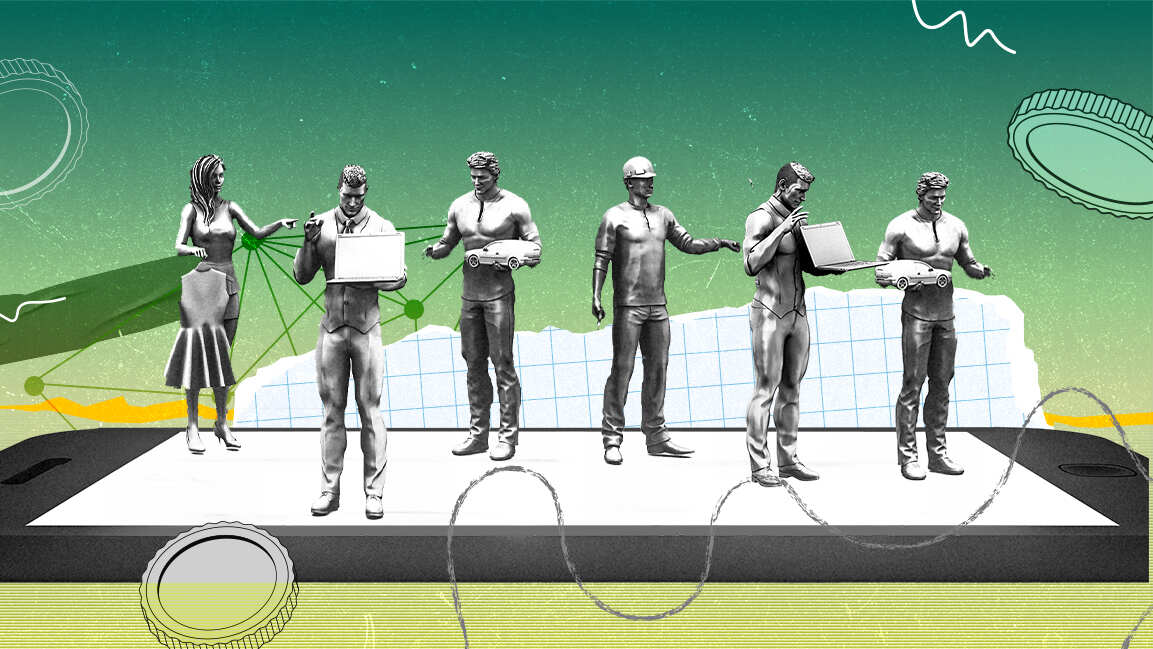- | 9:00 am
How microshifts can reshape workplace dynamics in the Middle East
Flexibility, extra income, sustainability, and advances in AI and automation are driving the rise of the micro-shift work model.

Gen Z is redefining workplace norms again by popularizing “micro-shifts,” a rising trend centered on short, flexible shifts of six hours or less. Designed to support better work-life balance, micro-shifts are reshaping how employers and employees think about productivity and scheduling.
This trend is in line with the current upswing of the gig economy, particularly in the MENA region, which now ranks among the fastest-growing freelance markets. Freelance registrations jumped 142% in 2023 compared to 2022, driven by a young, educated workforce seeking flexibility, growing digitalization, and shifting work cultures.
In Saudi Arabia alone, registered freelancers rose by 157% between 2020 and August 2023, with demographic trends fueling gig economy growth in major economies like Saudi Arabia, the UAE, and Egypt.
Far from signaling a desire to work less, micro-shifting reflects a shift toward working smarter. These shorter, adaptive shifts are unlocking access to an underutilized talent pool and challenging conventional employer-employee dynamics, as both companies and workers look for solutions that promote agility, inclusivity, and sustainability in the evolving world of work.
KEY DRIVERS OF MICROSHIFTS
Ola Elkelany, HR consultant and people and culture expert, says the pandemic marked a significant turning point, breeding a generation of workers who prioritized work-life balance, mental well-being, and the desire for flexibility.
“Their preferences helped normalize non-traditional work structures, including shorter and more personalized working hours.”
The trend of micro shifts is rising not just due to the preferences of employees but also due to the advantages it brings to companies.
“Following the pandemic, Organizations started to adopt more flexible work arrangements to sustain operations while managing time and cost more efficiently. This shift laid the groundwork for more adaptable work models, including micro-shifts.”
AI and automation also saw rapid advancements, which reshaped the labor market as businesses began adopting these technologies to remain competitive, enhance efficiency, and reduce operational costs. “This transition encouraged the adoption of micro-shifts as a way to align workforce deployment with business needs while offering flexibility to employees.”
Workplace culture expert Lorna King says consumers’ expectations also drive this shift, as they increasingly demand on-demand services, impacting sectors such as hospitality, logistics, and customer service. “Additionally, we have strong seasonal patterns in the Middle East, including short demand surges such as Eid. This creates a need for agile staffing models.”
King points to technology as a key enabler. “Platforms like Talabat, Noon, and Careem have made connecting people with short, flexible work assignments easier.”
From an employee experience perspective, as the micro-shifts model grows, it will appeal to people who need autonomy — students, parents, and gig workers. “This could be especially true in markets like the UAE, where over 85% of the workforce is expatriate and many seek supplemental income on flexible terms.”
In 2025, the MENA region faces economic strain from global trade tensions, policy uncertainty, and regional conflicts. Inflation is expected to rise slightly to 2.7%, with wide disparities—from 2% in the GCC to as high as 30% in Iran. Youth unemployment is projected to stay above 24%, a long-standing trigger of unrest.
Lucy d’Abo points to a few key drivers including workers’ demand for flexibility, the rise of technology and the popularity of the gig economy. She adds that economic pressures make up a significant reason for the adoption of microshifts.
“Both workers and employers are seeking cost-efficiency and flexibility. Micro-shifts allow workers to piece together income, while employers can align labor precisely with demand.”
OPPORTUNITIES AND LIMITATIONS
Marwa Hasbini, Career Coach and HR & OD Consultant, explores the opportunities and challenges that accompany the rise of micro shifts. She explains that offering exposure to the wider business and access to learning and development (L&D) initiatives can be particularly attractive to micro-shifters—especially those who prioritize career growth and skill-building.
For many in this workforce segment, including students and early-career professionals, the opportunity to gain experience and upskill within a flexible work model can be a powerful motivator and differentiator.
However, this model also presents challenges. Hasbin points out that retaining microshifters over the long term can be difficult due to the inherently transient nature of gig and part-time work. Moreover, their limited interaction with the core team may reduce opportunities for meaningful engagement with the company’s mission, values, and development pathways.
Elkelany says microshifts can help address growing skills gaps by enabling organizations to upskill their current workforce and redeploy them in more agile ways. The model has appealed to workers who previously struggled to participate in the labor market due to personal constraints or concerns around job security.
“It also opened up global employment opportunities without the need for relocation, removing traditional barriers like migration procedures and geographical limitations.”
She imagines a workforce composed of microshifts, where employees work very short, flexible periods throughout the day, almost like puzzle pieces fitting exactly where needed. “This setup allows companies to optimize labor costs by aligning staffing perfectly with demand, enabling greater operational agility and access to a wide range of workers who prefer flexible hours.”
Elkelany points out that the system also presents significant challenges: workers may struggle with income instability and a lack of connection to the organization, leading to high turnover and reduced motivation. Training becomes difficult when employees have limited time on the job, impacting consistency and quality.
Additionally, managing a highly fragmented schedule increases administrative complexity and exposes companies to legal risks related to labor standards. “Thus, while a micro-shift workforce can provide precision and cost control, it demands careful balancing of workforce engagement, compliance, and operational efficiency.”
King also says that a microshift system might affect a company’s ability to maintain quality control. “Your customer experience is your brand, and that becomes harder to manage with an untested workforce. Maintaining a consistent culture and product with a micro-shift workforce is difficult, and that’s where organisations need to get more intentional about creating an infrastructure that supports this new dynamic.”
TRADITIONAL EMPLOYEE RELATIONSHIPS
Traditional contracts assume loyalty, engagement, and time spent in the same team, King says. “With micro-shifts, that’s out the window. You can’t rely on long-term relationships to build culture or performance — you must embed meaning and consistency into even the shortest experience.”
For King, that means rethinking onboarding, recognition, and communication. In this region, where reputation and consistency matter deeply, businesses will need to find ways to deliver quality and foster connections quickly.
ElKelany says that while micro-shifts are challenging for employee loyalty and workplace culture, they offer a key advantage: performance-based resource utilization. “Since talents are often hired on a task basis, companies will shift focus from hours to outcomes, adopting advanced performance management tools and more flexible scheduling systems.”
She explains that this evolution is set to redefine the employer-employee dynamic. With greater autonomy over their time, employees will operate more independently, while employers will place increasing emphasis on outcomes and productivity measures. “Traditional protections and benefits may become optional or externalized, reducing long-term job security and requiring companies to rethink how they attract and retain talent.”
THE FUTURE OF WORK MODELS
Hasbini foresees the micro shift model continuing to evolve, particularly as mental health gains greater attention and modern life becomes increasingly fast-paced. Micro-shifts’ flexibility aligns well with the growing need for work-life balance.
However, she notes that the legal framework surrounding these types of engagements can pose limitations, particularly in countries where freelance or part-time work requires specific licenses or formal business registrations.
In such markets, the lack of regulatory clarity may create barriers for individuals seeking to participate in micro-shift work and complicate employer compliance.
King believes that while the micro-shift system will grow, it will require more structure to be sustainable. “Tech will play a bigger role, sure, but so will things like values-based training, short-form comms, and peer support networks.”
“Currently, micro-shifts are mostly focused on operational and customer-facing roles. I look forward to seeing the gig economy increase in more knowledge-based sectors, especially as the visa situation becomes increasingly flexible.”
King notes that there’s also a real opportunity for governments in the Gulf. Micro-shifts could offer flexible ways to support youth employment, women’s participation, people of determination, and even nationalisation goals.
“But we need to stop treating these workers as temporary extras. Even if they’re only with you for a few hours, they’re still part of your brand and deserve to feel a sense of belonging.”
Elkelany believes the microshift system will accelerate the rise of virtual offices, enabling entrepreneurs to run businesses remotely using advanced workforce management tools.
She foresees legal frameworks adapting to this evolution. “Labor laws will adapt to focus on assignment-based work, making it common for individuals to juggle multiple jobs while ensuring clear commitments around copyrights and employer obligations.”
“This shift will create a flexible, dynamic work environment where talent and businesses thrive through digital collaboration and legal clarity,” she adds.






































